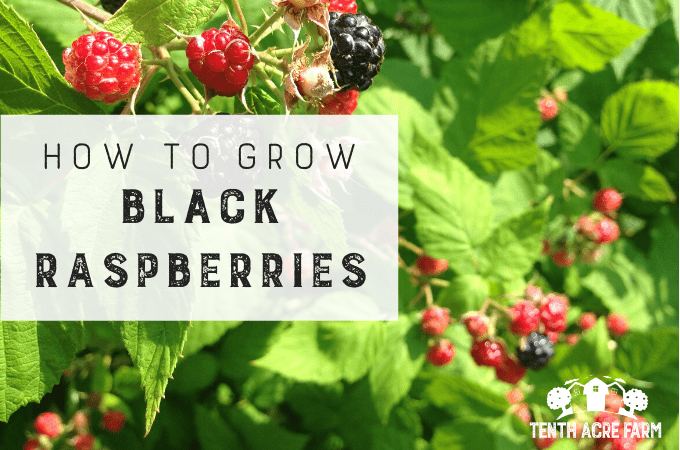The parking strip—that unused sliver of grass between the street and the sidewalk—is often overlooked as a location for growing edibles. Here are some challenges with growing in this space, and some strategies for making it both beautiful and productive.

This page may contain affiliate links. Please read my disclosure for more info.
The parking strip goes by many names—hellstrip, devil’s strip, verge, parkway, boulevard, sidewalk grass—to name just a few. Whatever you call it, the trend to grow more food in our yards is gaining popularity, and this generally unused space is now getting noticed.
What if the parking strip could be beautiful and low maintenance, AND produce delicious edibles, too? Below I’ll share some of the ways unconventional gardeners are using this space, and share the strategy that worked for me.
The Urban Parking Strip
Ron Finley caused a stir a few years ago with his guerrilla parking strip gardens in Los Angeles as a way to combat urban food deserts in his neighborhood. He is famous for having said, “Growing your own food is like printing your own money.” Be sure to watch his inspiring Ted Talk!

Photo of Ron’s Parkway Garden via RonFinley.com
The Suburban Parking Strip
The trend for planting productive gardens hasn’t skipped the suburbs, however. This article discusses how to farm your parking strip, highlighting a charming suburban residence in Seattle, WA. Aesthetically-built raised beds tastefully mix growing edibles with pollinator gardens and other features, while allowing easy access between the street and the sidewalk.

Parking Strip raised vegetable beds, Seattle, WA. Photo by Erin Lau Landscape Design. First seen on Houzz.com.
Imagine the yields our cities could produce—increasing national food security—if we simply grew edibles in the parking strips!
This got me thinking about our parking strip project at Tenth Acre Farm. We began in 2011 by planting three ‘North Star’ dwarf cherry trees. (You could also try a ‘Montmorency’ cherry from Food Forest Nursery.) In our yard, the parking strip happens to get the most sun, so why not put it to good use?
In their second year, our young cherry trees yielded two pounds of cherries. They made the most wonderful pie filling and smoothies! By their sixth year, they produced 27 pounds of fruit!

Ripening cherries in the parking strip

Parking strip harvest!
By farming the parking strip and reducing the lawn, not only are we increasing our edible yields, but we’re also adding beauty, providing habitat for pollinators, and increasing biodiversity. Read more about planting cherry trees and how we ensured their growing success: The Cherry Tree Guild and Natural Pest Control
Want to grow fruits, vegetables, and herbs in your front yard landscape without sacrificing curb appeal? Check out my mini guide, The Permaculture Inspired Edible Landscape.
A Potential Problem with Parking Strip Plantings
Parking strips are undervalued real estate primed for planting edibles. But there’s one potential problem with growing in a space that technically does not belong to the homeowner: Rights to the parking strip. Here is how to overcome this problem and grow food anyway.
Utility Work: Who has rights to the parking strip?
Although the property owner maintains the parking strip, the space is also a right-of-way for utilities. This means that if the parking strip needs dug up for utility repair or improvements, the workers are in the clear to dig up anything that’s there. They are only commissioned to seed with grass after the work is complete.
Our parking strip gets the most sun of anywhere on our property, so we decided to roll the dice and plant some stuff anyway.
Locating Utilities
Before we invested any time and money into a parking strip planting, we located—as best we could—underground pipes and wires so we knew where NOT to plant. We planted three cherry trees, with two of the trees straddling either side of the inlet for water and gas pipes to the house.
We thought we hit a home run in the category of small-space gardening!
And then one summer day, construction workers, orange cones, dump trucks, backhoes, and “no parking” signs showed up right in front of our house unannounced. There was even a port-o-potty. They were there all day, every day, for three months, creating noise and dust, and blocking our driveway.
The water company was apparently replacing the main water lines, which is fantastic, but I didn’t know what to expect as far as our landscape was concerned. One afternoon I came home to find a man standing in a 5-foot-deep hole in between two of our cherry trees, where the main water line in the street connects to the pipes that run to our house.
The workers had cut out a significant chunk of their root systems when digging the hole. As a result, the middle tree showed signs of stress and dropped its leaves because the earth underneath the tree was power washed away. Luckily, we had placed the trees in the best spots to avoid the backhoe, and the trees bounced back without skipping a beat!
So, the lesson is to be REALLY sure you locate those underground pipes and wires before you plant.
Would you like to learn more about making the most of small-space gardens?
You’ll find loads of information just like this in my award-winning book, The Suburban Micro-Farm.
You Can Grow More Food While Lawfully Allowing Municipal Access
In fact, because the homeowner is required to maintain the space, I wholeheartedly support growing appropriate and useful plantings that increase biodiversity and give us an edible yield.
The following are some of the major considerations for creating a successful parking strip planting.
6 Planting Considerations for Parking Strips
1: Follow Municipal Guidelines
Seek out the planting guidelines for your municipality. In the city of Seattle, garden beds should respect the pedestrian by being built:
- Three feet away from the street
- One foot away from sidewalk
- Three feet apart from one another for pedestrian access to street
- Less than 18 inches tall
2: Consider Water Access
Does your hose reach? If not, are you up to lugging watering cans? Does it collect water and remain soggy for some time after a rain, or does it remain dry if not irrigated regularly? Plant according to the site, especially seeking drought resistant plants if appropriate.
3: Avoid Dog Pee
This is a concern that many parking-strip-curious-gardeners tend to bring up. My recommendation is to grow fruit trees, since fruit harvested from trees will be safe (as long as the fruit is harvested from the tree rather than the ground), but the same can’t be said for low-growing vegetables and herbs. Therefore, if you’re interested in growing vegetables, consider building a raised bed for low-growing crops.
4: Locate Utility Access Areas
We spaced our cherry trees to keep access available to the utility pipes and cables that run underground through the parking strip.
5: Expect to share
Parking strips are prime picking spots for pedestrian grazers. Rather than being annoyed by those guerilla gardeners, rejoice in the fact that someone gets to eat fresh, chemical-free produce! I see this as a concession for growing in what is technically the public right-of-way.
6: Grow Beauty
If growing edibles in the parking strip makes you nervous, the book Hellstrip Gardening will show you how to create a garden for beauty and biodiversity.
What do you think? Would you farm your parking strip?
READ NEXT:







Lemongrass says
I would plant Lavender and Lemongrass and a fruit tree.
Amy Stross says
That is such an interesting combination – the scents would be lovely!
You must live somewhere warm to grow lemongrass, or perhaps you would grow it in a pot and bring it indoors in the winter?
Amy Schmelzer says
I was a professional civil engineer before I had kids. I designed many water lines, sewer lines and storm drains. Sometimes the main runs under the pavement, but often times it is in what you call the parking strip. When we laid out a new main, we tried to stay at least 10 feet from any existing trees. When planting a tree, you need to know where all the mains are as well as the service laterals that go to your home. Depending on the width of the road right-of-way, you may not have 10 feet of free space. Please call to have your utilities located before you invest in trees or plants for your parking strip. Maybe you’ll get lucky and find out that they are all across the street! Trees have massive root systems and will look for water where they have find it even if it’s a sanitary sewer.
Amy says
Great advice!
Tessa says
This so confuses the neighbors and I love it!
erin Miller says
Thanks for your posts. I have been looking at them for inspiration! Love the Seattle parking strip pic! I ordered 2 apple trees and a 2 pears bear root and would love to plant them in the parking strip.
LJ says
Thank you so much! Lots of great information! However, I am confused about one thing. You say that your city regulations limit the height to 18″, but I am sure your cherry trees must be much taller than that!
Amy says
This is the height for non-tree plants to avoid a nuisance citation in unmowed areas.
Gayle says
A year after we planted our “Hellstrip”, the city began replacing sewer lines along our street. We waited to see what would be done in front of our house. Even the neighbors were concerned for us. I was ready to dig up the planting’s if I was given prior notice as we knew it wasn’t our property when we did it. Luckily, the contractor came by to let us know that they worked out a plan to destroy as little as possible but still dig and replace the lines. They eventually dug up only a 6 foot section of a stone pathway we had laid and prepped it for us to relay the stones when they were done. I was thrilled! Had it been the city workers, we wouldn’t have been given that consideration, but the contractor was practiced in dealing with that type of situation.
Amy says
How wonderful. Thanks for sharing your happy ending story!
Lauren says
I’ve planted mine. All drought tolerant species, hopefully it will be an open access food garden when it’s finished. Right now it has echinacea, watermelons, irises, penstemons, sage, sunchokes, sweet potato (as a test) and groundcovers. Next year I’ll be putting in the major plantings and bushes. It is heavily mulched and gets watered every two weeks.
Amy says
This sounds wonderful! What a great addition to your yard and neighborhood! Do you have to worry about dogs in your neighborhood? If so, that might render much of these ground-based plantings inedible.
junassipark says
Check local laws and covenants. Some cities and/or homeowners associations prohibit trees planted in the “parking strip” easement. We built in a subdivision. After probably half of the 400+ lots were developed, trees were planted by the management company. Later, they had to send a company out to remove all the trees planted in the easement. Luckily for the homeowners, the landscape company planted the trees in our front yards. If we let the landscape company know ahead of time, we were allowed to have them planted in our front yards where we wanted them.
Terry says
I’d only plant flowers. FOOD PLANTED NEAR CONSTANT CAR EXHAUST WILL BE INCREDIBLY TOXIC!!!
Amy says
Yes, certainly on a busy road this would be a concern, but for those of us living in neighborhoods and residential streets, there’s no reason to panic.
Kia Freeman says
Despite the pandemic, I have a lot of foot traffic in front of my house–including dogs. For some reason, some dog owners believe that it is their right to have their dog dig in my thin (1-2 ft deep) hellstrip. One owner even claimed it was his right to have his dog dig in my garden. As a dog owner myself, I find all of this pretty outrageous. Other passersby have suggested that I am somehow obligated to grow grass in the hellstrip; this is definitely not true, but people have their opinions. I would like to plant something (other than grass) in my hellstrip. Any suggestions on dealing with these garden challenges?
Amy says
There are lots of practical suggestions in the article above. Among them, “Seek out the planting guidelines for your municipality.” No need to spend energy battling with neighbors about what is lawful and practical, just go right to the source and get it in print.
In addition, unless you’re willing (and lawfully able) to build raised beds, don’t grow a vegetable garden here. Plant fruit trees (after identifying utility line routes) and keep them pruned so they don’t drop fruit on pavement. This keeps everyone happy and allows access for dog walking.
Dan Jacobson says
What about chemicals leaking into the soil from blacktop streets?
Amy says
The only time these toxins would be a concern is if you’re growing crops on the surface of the soil, such as annual vegetables. However, there would be no problem when growing woody perennials such as fruit trees or berry bushes, because soil toxins are never pulled into the fruits of plants.
Finally, although toxins may leach into nearby soil from recently blacktopped streets, these toxins are shown to be largely dormant on older blacktopped streets. So the answer is dependent on the age of the blacktop, as well as what you plan to grow.